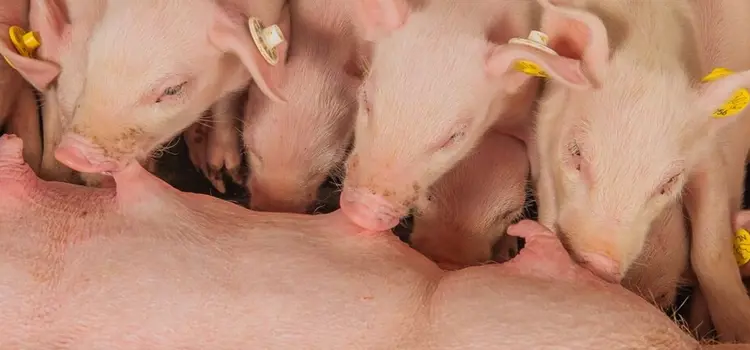The key to a profitable pig farm
Sows are the most important animals on your farm. They produce piglets and give them a good start in life and provide them with the nutrients they require up to weaning. They have the biggest influence on the size and quality of your grower-finisher herd. So, it makes sense that investing in sow nutrition and management will pay off in good returns. This article introduces focus points in sow nutrition and management which must be addressed to optimize production of the modern sow.

Sows can be compared to Olympic athletes
In the last 20 years, piglet production has increased significantly (Figure 1, 2 and 3). This is putting pressure on the sow's health and welfare and can also affect the quality of the newborn piglet. Modern sows can be compared to Olympic athletes, and they should be managed accordingly. Giving birth to a high number of piglets, producing milk to obtain high piglet weaning weights and then getting pregnant again, demands a lot from the sows’ body. In addition, selection for leaner grower-finisher pigs also leads to leaner sows resulting in sows with less body reserves. Sufficient body reserves are necessary to ensure sow health and as an energy buffer to be used under challenging conditions, such as when feed intake may be low.

Figure 1: Change in weaned/litter in Spain Source: BD Porc.

Figure 2: Change in born alive/litter in Holland Source: Agrovision.

Figure 3: Change in born alive/litter and weaned/litter in South Africa Source: PIC
Effects of high production
The nutrients required for (milk) production combined with the nutrient intake from feed determines the need to use body reserves to prevent excessive mobilization of body reserves and to ensure good, long-term, productivity. If the sow does not consume sufficient nutrients, she can show reproductive, locomotive or health problems leading to lower production or even being culled from the herd. Gilts and young sows are especially sensitive to mismanagement, and they account for about 20% of the sows that are removed from the herd in the first 2 parties.
Assessing nutritional requirements for sows
If we want to feed sows to meet their requirements, we need to know what their requirements are. These are calculated by determining the maintenance, the growth, and the production requirements. To determine the requirements for production we need to know sow parity, stage of production, the body condition (development) as well as the desired production level. During gestation, requirements are determined by maintenance, maternal growth, growth of the developing piglets and udder development. Maternal growth can be divided further into growth of the young sows to reach mature size, and/or recovery growth from the previous lactation. During lactation, the requirements are those for maintenance and milk yield.

Figure 4: Factors determining the nutritional requirements during different stages of sow production.
Feeding to requirements
Knowing what the nutrient requirements are, we can determine if these can be met with the feed available and feed management. The nutrient content of the feed and the feed intake will determine if the nutrient requirements can be met. It is important to know the actual feed intake that the sow can achieve as this may be lower than the amount of feed being allocated. During gestation, sows will usually have no difficulty in consuming the allocation of feed given to them as it is quite a small amount. For lactating sows, it may be more challenging for them to be able to eat the required feed allocation. Knowing the real feed intake is essential so that the density of the diet can be designed to match the feed intake to meet the requirements of the sow.
Once we have all the information on the variables that affect the sow, the feed density, and the feed intake, we can begin to manage and optimise the performance of the sow through the different production phases, weaning-to-oestrus interval, gestation, transition, and lactation. Each phase has its challenges regarding nutrition and management. These production phases will be discussed in more detail in the next articles in this series.
Should you require more information relating to Sow feeding in early gestation please contact your De Heus Technical Specialist - https://www.deheus.co.za/meet-our-team/




